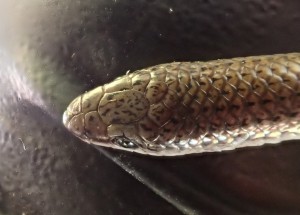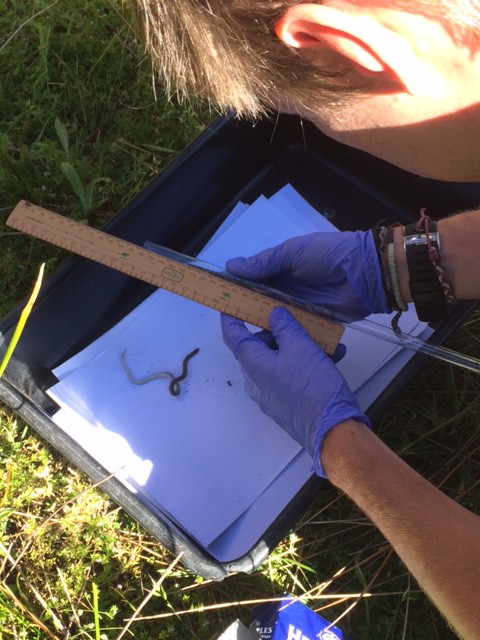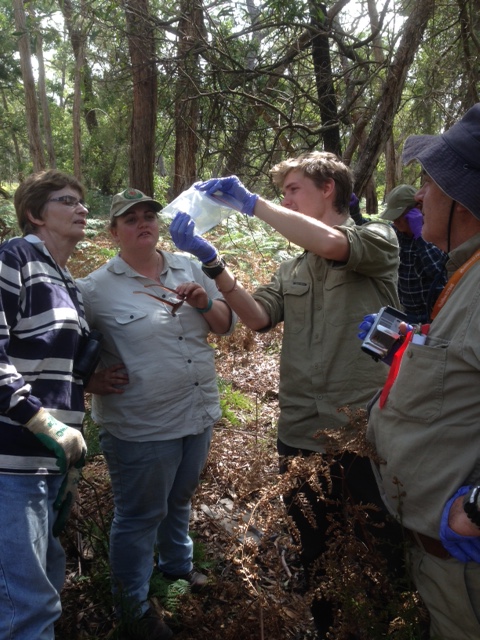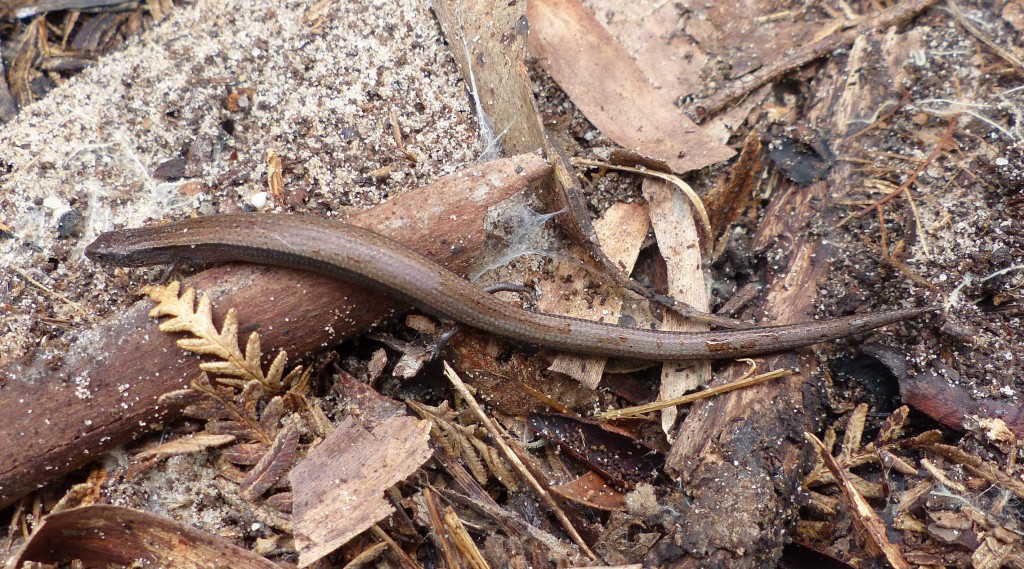Roofing tiles are working a treat for finding rare reptiles
The annual monitoring event for the South Australian population of Eared Worm-lizards was recently undertaken at Furner forest, north of Millicent in the lower South East. The Eared Worm Lizard or Aprasia aurita, only discovered in South Australia in 1997, is a species of legless lizard endemic to south-eastern Australia and is listed as critically endangered by the IUCN. 9 participants attended this year’s survey, from organisations such as the Millicent Field Nats, Bush Repair and Natural Resources South East. All helpers were essential this year, as we were all kept surprisingly busy throughout the entire day.
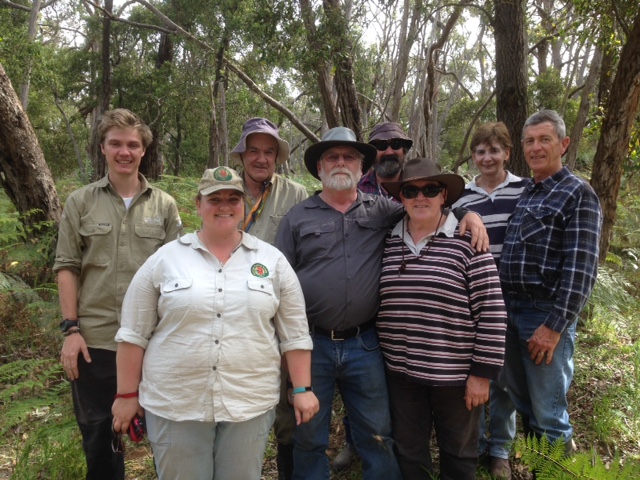
Aprasia catching team for 2016 – from left to right – Patrick, Elouise, Ken, Stewie, Rob, Rosey, Linda and Peter
Tasks for the survey involved;
– Carefully lifting tiles to see what was beneath them,
– Identifying reptiles seen before they scurried (or in a few cases slithered) away,
– Recording numbers and information on data sheets,
– Capturing, then measuring our target species (A. aurita),
– Photographing the head scale pattern of each A. aurita caught and
– Collecting ants found beneath each tile where an A. aurita was found.
Ants were collected during the survey as it has been suspected that they are an important food source for this legless lizard. Overall, 17 individual A. aurita were caught from four sites. Two sites were small natural inliers within the plantation at Furner (with 7 and 5 individuals), and two sites were within the Malone Heath Native Forest Reserve (with 4 and 1 individual).
Two out of the four sites were in Swamp Gum Woodland where a grass/sedge understorey grows. The other two sites were sedgy, open and undisturbed.
It was unfortunate that Mark Hutchinson from SA Museum couldn’t make it down to help due to illness, however Mark was with us in spirit (and over text messages) to offer advice during the day.
By lunchtime, we had completed the monitoring for A. aurita and decided to head to the Woolwash Native Forest Reserve for lunch. The group was then treated to a viewing of a thriving colony of Nannoscincus maccoyii or the Salamander Skink.
This species is extremely rare in the lower South East region and was only formerly known from a few coastal peat wetland sites, before a chance encounter by the Bush Repair works crew discovered this new population back in February 2015. Ken Jones and crew were removing Sollya plants (a problem garden-escape bushland weed, originally from WA) when a nest of eggs was found by chance, refer to video link to Bush Repair findings. As this was a new site (and habitat type) for this species in SA, NGT decided to take on the further search for this species and placed out two 50 tile grids at the known site, and another site located 350m away in similar habitat.
The roofing tiles were placed out to monitor the colony found in December 2015, with the first monitoring event occurring in September 2016. Extraordinarily, 16 individuals were found in one 50 tile grid alone. So overall, the group were able to have close up views of this tiny dark brown skink and the trip was a huge success, especially in setting up a future study site for the Salamander Skink in the future.
This project is supported by Natural Resources South East and the Australian Government.
By Pat Pickett and Bryan Haywood

